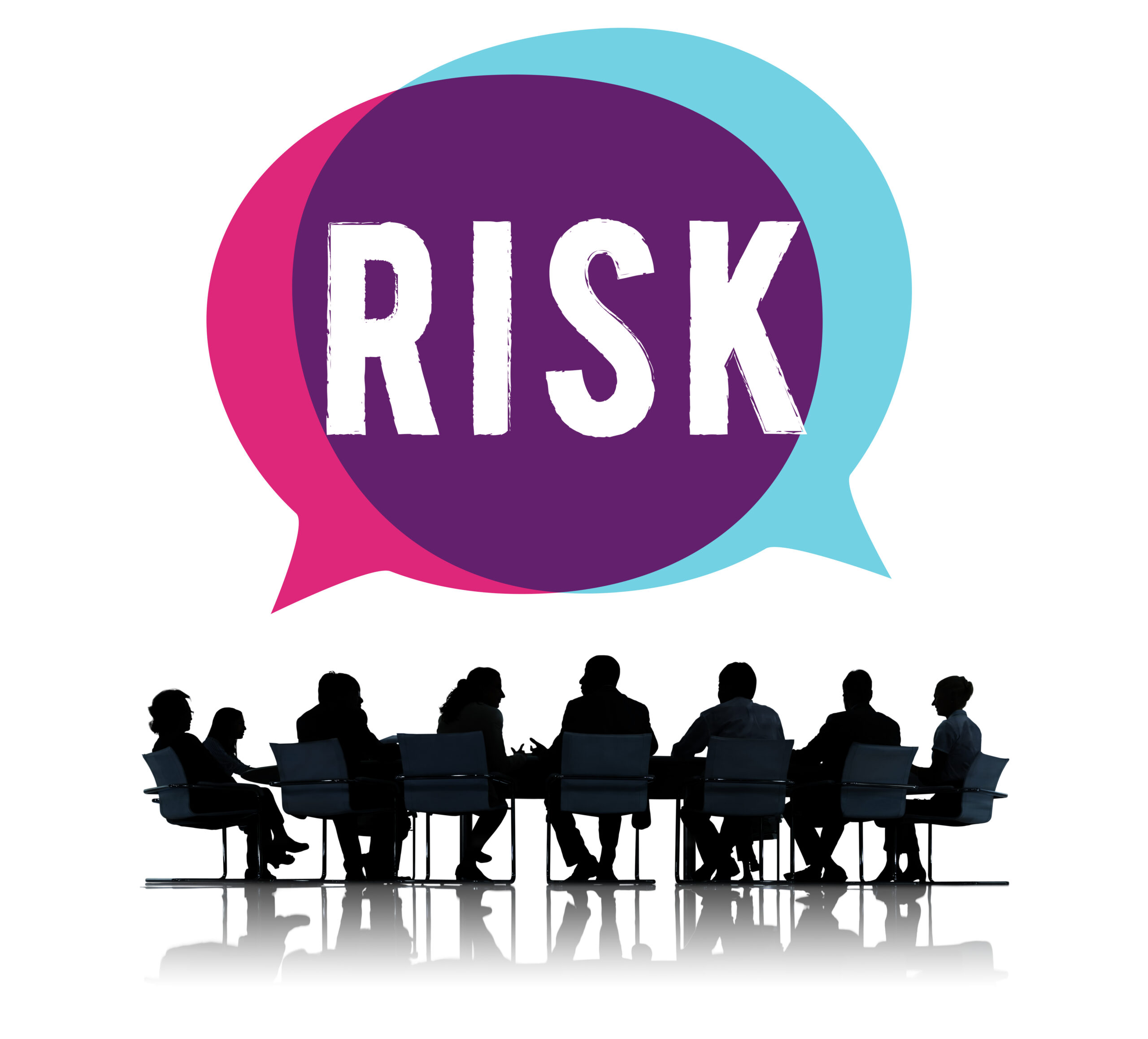Techniques to Manage Risk When Investing in Real Estate

SIRM,PMP, PMI-RMP, M-o-R_P, NEBOSH, SIX SIGMA, LEED AP, P3O, CQRM
In the world of real estate, property investment has long been a hot topic. People have shown a desire to invest huge sums of money in residential and commercial properties. However, the fact that remains unspoken is that the investment will only be effective if the purchasing method is carried out appropriately. There are various concerns that you should be aware of, even if they are not immediately apparent to you.

Any form of investment has a certain level of risk associated with it. Real estate investing, like any other speculative undertaking, entails a number of risks. Among these risks, some risks can be systematically estimated and avoided whereas some are not within as investor’s control. For example, investors can avoid the risk of losing all their money in a single investment by diversifying. However, risks associated with demographics and unexpected events are beyond the control of any investor. In any case, it’s smart to recognize the level of risk that an investor is comfortable taking and also find ways to manage the said risk, to benefit more from their investments.
Risk management is the method of determining which risks are present in a given investment and then coping with them. Risk management is critical because it can help investors and portfolio managers mitigate risk based on their financial objectives. In this article we will discuss the various risks involved in real estate investing and how to mitigate these risks to earn attractive returns on your real estate investments.
Read Also: ITS ( Intelligent Transportation Systems)

Risk Management and its objectives
Risk Management is a method of determining the various risks associated with an investment and then finding ways and methods to cope up with them. It is a very important course as any large and small issues can take a toll on your investment economically. Risk management helps in mitigating the risk based on the financial objectives of the investor.
The three main objectives of the risk management plan are to avoid, control and transfer risk. Risk avoidance simply means ignoring those activities that are too risky and risk control entails the process of having an efficient plan to minimize the potential risk of investing. The process of transferring risk can be explained as the process of shifting the risk to a third party, for example, insurance.
A good property manager will always have a plan to solve any issues in the property in the most efficient manner, keep all the files and records updated and keep a check on the different functions that are carried out on the property to ensure if any changes, repair or maintenance work is necessary.
Importance of risk management
The risk management process is very important as it helps property managers to identify all potential risks and find necessary solutions. One of the major processes in risk management is the identification of all potential risks associated with the property. The type of risk that you incur varies based on the type of property you invest in and also the methods you employ in investing. Once all the potential risks are identified, it is easy to find solutions and mitigate them. Risk management can also help you identify all potential defects in the property and eliminating them one by one to gain better returns once it is sold.
Assessing your property and then managing them are some of the best ways to manage risk and any eventualities that may result in risk. After you identify all the potential risks, you are required to assess them based on the loss you may incur on their happening and the need for immediate solutions. By identifying and assessing your risk, you will be able to plan your finance better and ensure cash flow.

Risk in Real Estate & ways to mitigate them
Financial Risk
Many people take on large debts to invest in real estate. Are you aware, however, that using debt to finance an investment increases the risk? Yes, the quantity of debt acquired is directly proportionate to the danger. Interest rates are never consistent, which might lead to an increase in financing costs, which is undoubtedly bad for you. This danger affects both commercial and residential property investors.
Liquidity Risk
When a continuous market is unavailable, i.e. when a sufficient number of buyers and sellers are not present, selling a property becomes difficult. In such cases, one must either under-sell the house or wait for a longer period, often up to a year, for the appropriate price!
Market risk
The real estate market is in a perpetual state of flux. Supply and demand, as well as economic and financial conditions, will all have an impact on the profitability and success of a real estate investment at any given time. The real estate market is cyclical, which means that it is not a question of whether but when market conditions will shift.
As real estate is so localized, diversification is one of the most effective strategies to reduce risk. Your risk exposure is reduced by owning a variety of asset classes in different sectors or different markets. During the worldwide pandemic, industrial real estate has performed well, whilst retail, hotels, and office space have done poorly.
Also Read: Sequences of not applying safety precautions in construction sites
Another strategy to reduce risk is to ensure that your real estate portfolio is not over leveraged and that you have adequate reserves. If the market drops, you’ll have enough cash to keep your real estate investment continuing until the market recovers. Keeping a close watch on market conditions might also help you manage risk. If the market is high, it can be a good idea to sell that asset, recapitalize the company, or upgrade to a newer asset to avoid obsolescence.
Legal risk
Another significant risk that real estate investors confront is litigation. It’s critical to have the right insurance in place to assist cover the costs if someone is hurt on your property or files a lawsuit against you for wrongful eviction, breach of contract, failure to disclose a defect, or any other type of legal action.
When it comes to legal risk, all three risk reduction measures come into play. Some risks can be completely avoided, but only to a certain extent. Investors must understand and stay up to date on current local, state, and national real estate rules to be compliant. Make sure an expert attorney droughts and reviews any contracts, leases, loan agreements, or other underwriting measures.
Even if you’ve followed all of the regulations, renters, borrowers, and other real estate professionals can challenge an eviction or foreclosure, or take other legal action against you as the landlord, property owner, or lender, even if you’ve done everything correctly. Risk transfer is used in this situation.
General liability insurance can assist cover property damage claims, medical expenses if someone is harmed on the premises, and legal bills or settlement claims in lawsuits. Errors and omissions insurance is a type of liability insurance that covers concerns involving employee-client relationships. This is especially useful if an employee goes rogue and a lawsuit is brought against the employee or the real estate agency.
Always keep proper records of all financial transactions and correspondence with borrowers, tenants, and investors, and make sure you’re functioning legally. This information can be used to support your position in the event of a lawsuit. If you do save files or converse digitally, ensure sure your information is secure. Cyber-security claims are becoming increasingly common. Working with operating systems to understand their data security policies and procedures, and ensuring that measures to protect sensitive data are in place.
Environment risk
Another significant risk that real estate investors confront is litigation. It’s critical to have the right insurance in place to assist cover the costs if someone is harmed on your property or files a lawsuit against you for negligence. Hurricanes, tornadoes, earthquakes, fires, wind damage, hail, and other natural disasters can all cause property damage. Property insurance covers costs associated with property damage caused by most environmental events, although named storms may necessitate supplementary policies or coverage, such as flood insurance or hurricane riders.
Property risk
Environmental causes aren’t the only cause of property destruction. Damage to your property can also be caused by others. Squatters in a foreclosed property, stolen construction equipment, someone breaking in and stealing copper wiring, tenants destroying their home on the way out, dealing with squatters in a foreclosed property, or inadvertent damages from on-site work are all dangers that investors confront.
Deterioration of the property is also a worry. To avoid potential threats from persons visiting or occupying the property, real estate must be maintained and upgraded throughout time. Property insurance will also cover any damage caused by tenants or other third parties to your property. If the property is vacant or inhabited, however, talk with your insurance provider and make sure the policy provides enough coverage. Property insurance will only get you so far in terms of risk transfer. Investors must also manage risk by keeping the property in good repair.
Read Also: INVEST WITH EGYREVIT

How to deal with risk?
Real estate risk is unavoidable to some extent. Some risks can be completely avoided, while others can be lowered by transferring risk or continuously controlling it. While there are numerous innovative risk reduction strategies, they all fall into one of three categories:
Risk Avoidance
Avoiding a well-defined risk is one of the most effective strategies to remove it. Don’t buy residences with pools or hot tubs, for example, if you want to avoid unintentional drowning litigation.
Risk control
Since not all risks can be avoided, risk control is the most commonly used mitigation approach. Risk control might include things like maintaining a property before problems arise or having the right measures in places, such as a gate or lock surrounding a pool or hot tub.
Risk transfer
Risk transfer is another approach to protect yourself, and it’s frequently used in conjunction with other mitigation strategies. Having proper property insurance with coverage against potential unintentional drowning lawsuits that cover properties with pools, for example, passes the risk from you, the property owner, to the insurance provider.
Also, Read : What EGYREVIT Stands for ….
The dangers listed above do not represent all investment risks, but they are among the most common. The best thing investors can do becomes educated and aware of additional hazards and the best strategies to prevent, avoid, or transfer that risk. General liability and property insurance are two of the best ways to manage real estate-related risks, but the best thing investors can do becomes educated and aware of additional hazards and the best strategies to prevent, avoid, or transfer that risk.
Risk Avoidance Strategies for Real Estate Assets
Diversify your Portfolio to Mitigate Market Risk
The ups and downs of the real estate industry due to the economy, inflation and interest rates that cause an imbalance of the supply and demand in the market are well-known. The reality of any market is that it is constantly changing and this is bound to impact the profitability and the success of the real estate investment at a given time. Market shocks can’t be avoided, but investors can protect themselves with a diversified portfolio and keep an eye on the market conditions. Your risk exposure is minimised by buying a number of asset classes in various industries or in different markets.
Follow a Systematic Legal Procedure to Manage Legal Risks
Another significant danger that real estate investors face is litigation. It’s important to have the right insurance in place to help cover the costs if someone is injured on your property or files a lawsuit against you for wrongful eviction, breach of contract, failure to report a defect, or some other type of legal action.
To protect yourself from legal risks, it is important that you are aware of the current local, state and national laws pertaining to real estate. It is also a basic requisite to follow a systematic legal procedure while purchasing, selling or transferring your real estate assets. Make sure an experienced attorney drafts and reviews contracts, leases, loan papers, and other underwriting steps.
Consider Fractional Ownership to Reduce Liquidity Risk
Real estate is mostly regarded as an illiquid asset because it is not often easily liquidated. If the economy is experiencing a downturn, there may not be a good number of potential buyers available. In such cases, you may have to hold on to the property or under-sell the asset. However, the best way to avoid any major losses due to under-selling is by including fractional ownership that allows you to own a certain percentage of an asset that allows you to realize your profits by simply selling them. Fractional ownership would ensure that there is no net loss altogether and there are other sources for you to meet your immediate financial needs, if any.
Buy Adequate Property Insurance to Guard You From Environment Risks
Damage to property due to extreme weather conditions is among the environmental risks involved in real estate. It also includes property deterioration due to unexpected and unaccounted factors such as earthquakes, heavy rainfall, fires and other natural calamities.
The best way to mitigate against environmental risk is to be a smart buyer and educate yourself about the geographical aspects and anticipate risks according to the past track record of natural disasters in that specific area. However, these risks can be avoided only to a certain extent as they are unpredictable, hence it is also important that you have adequate property insurance that covers against losses caused by natural factors.
Periodically Monitor Your Property to Control Property Risk
Environmental conditions aren’t the only cause of property loss. Harm to your property can also be caused by others. Trespassers in a vacant property, stolen construction equipment, risk of someone breaking in, tenants trashing their place on the way out, or unintended losses from on-site construction are all threats that investors face.
You can hire experienced property managers to control your risk by monitoring your properties regularly and catering to repairs on time. In addition to this under these circumstances, transfer of risk is one option.Therefore, buying adequate property insurance that protects your position and assets in cases where the property is damaged by tenants, trespassers or builders, etc.
Conduct A Thorough Research to Gauge Replacement Cost Risk
As the market’s appetite for space pushes lease rates higher in older properties, it’ll only be a matter of time before those lease rates justify new development, raising supply risk. What if a better facility with equivalent rentals emerges, rendering your investment property obsolete? Rents may not be able to be raised, and occupancy rates may be low.
To mitigate this type of risk, it is important to estimate the competition in that locality with respect to the rates and amenities offered, to anticipate any sort of competition that could threaten your position in the rental market. Another way to counter this risk is to invest in relevant upgrades for your property to match the level and quality of amenities offered by other living spaces in your area to attract customers and tenants.
Risk is a fundamental factor of any investment and needs to mitigate at every stage to secure your investments. Real estate is undoubtedly a good investment. However, some factors may prove risky and are capable of causing you financial loss. Risk can arise from economical, financial, political, climatic factors. They can also arise from market conditions and even from unforeseeable situations. You can efficiently strategize your risk management process personally or with the help of property managers. Assetmonk is a smart investment platform that offers properties in Bangalore, Hyderabad, and Chennai. The curation process is carried out after conducting thorough due diligence to ensure the best investment opportunities for the investors. Visit us for stress-free investment opportunities!




